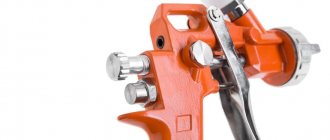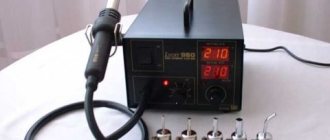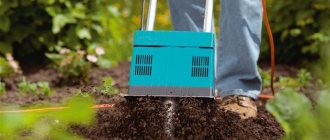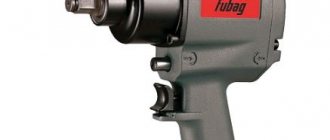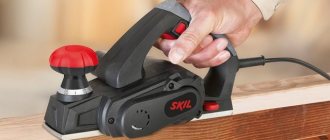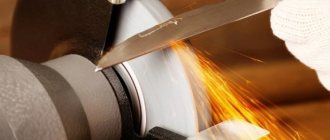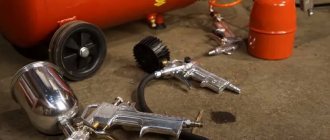What is a spray gun
Repairing a home or decorating a built object are important activities and usually take quite a lot of time. The correct choice of tools when carrying out finishing work largely determines the quality and durability of the applied coating. Using a device that allows you to spray paint onto the surface to be treated greatly increases the efficiency of the process.
Spray gun for water-based paint
Sprayers can work with any liquid materials that are suitable in terms of viscosity and size of the components included. The main areas of application of the devices: applying decorative coatings and primers, disinfecting premises, spraying plants. Painting walls and ceilings is one of the priority areas for using devices. It is easier to choose the right spray gun and prepare it for work if you have an idea of the design of the device and the principle of its operation.
Spray guns
Main components and parts of the spray gun:
- a handle necessary to hold the gun in your hand during operation;
- a tank into which the spray composition is poured;
- trigger responsible for supplying material;
- nozzle (nozzle) through which the composition is sprayed;
- regulators of pressure, torch size, liquid supply;
- fitting for attaching the air hose.
Main components and parts
One of the main parts of the devices is the nozzle. These removable devices can have different diameters, selected depending on the grain size of the material being sprayed. When carrying out finishing work, it is convenient to use extension cords (rods), which helps to carry out coating work, for example, on ceilings.
In addition to the listed components, the equipment can be equipped with additional devices, for example, a compressor, without which the pneumatic apparatus cannot operate.
Carrying out painting works by spraying
In the private sector, as a rule, wallpaper or plastered surfaces are painted.
Painting walls with a spray gun Source amazon.com
Painting with water-based paint using a spray gun is carried out under pressure, so the working base must first be freed from dust, dirt and loose finishing elements. Regarding the tool, you need to make settings to work with a specific composition. It is recommended to carry out a test application of the material on newspaper or cardboard to determine the optimal distance between the nozzle and the object (range is 15-45 cm).
Advantages and disadvantages of the tool
Purchasing a spray gun for the household is justified if there is a need for frequent spraying of liquids in various situations.
Why is this equipment interesting?
- High speed of work, which is especially important when processing large areas.
- The ability to apply compositions to surfaces of any shape and made from different materials.
- Large selection of models offered by manufacturers.
- Reducing the consumption of sprayed material.
- Ability to use equipment to perform various tasks.
- High quality finish (when using a spray gun to apply paint).
Of course, the cost of a sprayer is often an obstacle to its purchase. Some of the disadvantages can be considered the excessive consumption of paints and varnishes when processing lattice structures, when part of the material is wasted.
Video description
Here we show how to properly assemble a new hand-held spray gun:
Finish from the corner towards the exit from the room. The main part of the wall is painted so that the direction of the torch is perpendicular to the working area. Be sure to let the coating dry completely between coats. In this case, each layer is formed across the previous one.
Recommendations for paint preparation
The viscosity factor is important in relation to the sprayed mass. To obtain a high-quality result, it is necessary to dilute the source material. Tap or distilled water is added to the water emulsion; solvents 646 and white spirit are added to the enamels. Some manufacturers of spray guns for painting prescribe proportions in the instructions for using the tool.
Paint thinners Source wp.com
Types of spray guns
The equipment can be hand-held or floor-mounted. The first is a single unit consisting of a gun, motor, pump and reservoir. Floor-standing models, which are mainly used by professionals, are characterized by greater productivity, a high margin of safety and a wide range of adjustments. They consist of two parts, which are connected using a hose. One part is the motor, pump and reservoir, mounted on the frame and protected by a casing. The second piece of equipment is a spray gun.
Depending on the method of pumping and pushing out the liquid composition, three types of spray guns can be classified:
- mechanical;
- air (pneumatic);
- airless (electric: mains or battery).
Mechanical apparatus
These devices are among the simplest and most reliable. The spray unit consists of a pump (manual) to which two hoses are connected. The first is lowered into a reservoir with liquid, and the second is designed to connect to a gun (or a simpler device - a tube with a nozzle and a valve to block the flow), the nozzle of which sprays the composition under pressure. As a rule, such units are equipped with extended sprinklers.
Mechanical spray gun
The mechanical device is characterized by mobility and autonomy. Equipment productivity – up to 250 sq.m./h. However, for its operation, an assistant is needed to pump up air. When applying the decorative composition, uneven layers may be observed.
Prices for the range of Black&Decker spray guns
Black&Decker spray gun
Video – Mechanical spray gun Black&Decker
Electric sprayers
The equipment operates using a built-in power unit and a piston pump that pumps pressure into the nozzle. The operating principle of the device, characterized by the spraying of larger paint particles (due to the lack of compressed air), does not allow for the same quality of painting as is typical for pneumatic spray guns.
Electric spray gun
Advantages of electric models:
- no need for additional equipment;
- budget price;
- no need for expensive maintenance;
To operate electrical devices, a 220V electrical network is required. Cordless spray guns are also available. Electric sprayers are designed to treat surfaces that are not too large. They belong to household appliances.
Important! Today you can find electric units with a built-in mini-compressor on sale.
Prices for popular models of network spray guns
Network spray gun
Pneumatic
To operate the equipment, you need a compressor with a receiver connected to electricity. It forces air into the spray device (gun), which is connected by a hose. High pressure breaks the paint particles into even smaller ones and pushes them out of the nozzle. The device easily copes with the processing of both large surfaces and small parts.
Pneumatic spray gun
Pneumatic equipment differs in the type of liquid spray:
- HP – high pressure system;
- LVLP – system with reduced pressure and small air volume;
- HVLP is a low pressure, high volume air system.
Pneumatic equipment
Pneumatic spray gun HP 1.5mm Intertool PT-0211
Important! When spraying water-based paint, it is necessary to dilute the composition. This is explained by the fact that the air pressure from the compressor dries the material.
Electric models are more economical, but they are more demanding on the viscosity of the sprayed compositions. The quality of painting is better with pneumatic devices.
Table. Comparison of technical characteristics of electric and pneumatic models.
| Index | Electrical unit | Pneumatic spray gun |
| Spray method | Airless | Air pressure |
| Productivity, sq.m/h | 200…260 | 300…400 |
| Weight, kg | Up to 3.5 | Up to 0.7 |
| Power, W | 180…700 | 1100…1800 |
| Tank volume, l | Up to 1 (floor standing models can hold 5L) | Up to 1 |
Prices for popular models of pneumatic spray guns
Pneumatic spray gun
Briefly about the main thing
Spray guns are designed for applying paint by spraying. The technology allows you to carry out work efficiently and quickly, and save on consumables due to the low paint consumption for this technique.
The classification is carried out according to the design and method of creating pressure in the devices. Thus, there are mechanical (based on a hand pump), electric (air and airless) and pneumatic types of spray guns. The quality of the result increases according to the transfer (as does the cost).
One of the criteria for choosing a spray tool is the diameter of the nozzle. It determines what paint or primer can be used with a particular nozzle. The universal size is 1.4 mm.
Knowing the structure and operating principle of the spray gun, you can assemble the device yourself. In this case, a conventional vacuum cleaner with a power of 1500 W will be relevant as a compressor.
Ratings 0
Spray selection criteria
Manufacturers offer devices with different technical characteristics. When choosing a tool, it is necessary to take into account individual needs and preferences. The effectiveness of its work in each specific case depends on how well the model is selected.
What should you pay attention to first?
Material from which the spray gun is made
It is recommended to give preference to devices whose body and other parts are made not of plastic, but, for example, of aluminum alloy. It is lightweight and has excellent resistance to any influences, be it moisture, temperature, aggressive environments or mechanical loads. Leading manufacturers also apply a nickel-plated coating to the aluminum body. Compared to plastic products, aluminum counterparts last much longer.
Pay attention to the material from which the spray gun is made
The nozzles should also not be plastic, but brass, aluminum or steel (stainless steel).
Brand and price
Of course, it is necessary to focus on the fame and reputation of the manufacturer. Although today many Chinese companies produce products that compete worthy with the products of venerable factories. Price also does not always determine the quality of a product. It is not so rare that devices costing around $300 could not provide the required quality of finishing work. And due to a disruption in the process of mixing air with water-based paint, the nozzle ended up clogged with clots.
A well-known brand does not always guarantee decent quality
Paint Tank Location
The tank can have an upper or lower position.
The main types of paint supply to the spray gun
When choosing a model, in this case you should focus solely on individual preferences.
Bottom position of the paint tank
Type of sealing gaskets
Sealing all connections in the spray gun affects the quality of work and the durability of the tool. Gaskets are constantly exposed to aggressive environments. In particular, solvents that may be part of the paint and varnish material. Sealing parts made of Teflon are endowed with high reliability. But they are usually installed in expensive equipment.
Teflon sealing gaskets for spray gun
Adjustment options
Various device models provide settings for the following modes:
- pressure;
- fluid supply speed;
- shape and size of the torch, etc.
Important! An excessive number of different functions is not always justified. The price of the equipment will be appropriate, and all of them will not be used.
Technical characteristics that are important when choosing a spray gun:
- device power;
- nozzle diameter;
- spray gun weight;
- air flow.
The size of the nozzle must match the thickness of the material to be sprayed.
Set of replacement nozzles
When purchasing a device, it is important to pay attention to other nuances:
- the quality of the holes in the nozzle, the material from which it is made;
- possibility of using replacement heads from other manufacturers;
- length of hose and electrical wire;
- ease of adjustment of equipment operating parameters;
- availability of warranty and service (if necessary), etc.
An important parameter on which the ease of use of the equipment depends is its weight. If you need to carry out work away from the electrical network, it makes sense to pay attention to the battery model. It is convenient when the instrument along with accessories is packed in a suitcase.
Set in a suitcase
Suitcase for 1 spray gun
Liked? Share on social media networks!
Home / Secrets of working with a spray gun
At first glance, painting walls with a spray gun may seem like a complicated undertaking, but in practice everything turns out to be much simpler.
The main thing is to adhere to a certain technique and sequence of actions. In this case, you will be able to paint the walls yourself using a spray gun no worse than any professional. We offer you step-by-step instructions, after reading which you can easily master a skill that is still new to you.
Before you start using the spray gun, you need to prepare the walls. If there is old coating on them, it must be removed. The plane of the wall must first be leveled, puttied and covered with a layer of primer.
It is the primer that ensures high-quality “paint adhesion” to the wall surface. It is important that the primer is dry before starting work. Otherwise, after painting, various defects may appear on the wall.
Also at the preparation stage you need to dilute a sufficient amount of paint if you are using color. This is necessary in order to avoid a situation where the supply of the substance is insufficient to cover the entire area of the walls.
In such cases, non-professionals often make a mistake: when preparing a new “portion” of paint, a smaller or larger amount of color is added and the color takes on a different shade from the previous version. Thus, when working with coloring, you initially need to prepare a sufficient volume of the product. If you are using ready-made colored paint, you can omit this preparation step.
Before starting work, you also need to assemble a scaffolding or “goat” so that you can reach the very top of the wall with paint. If the ceilings in the room are low, you can use an ordinary table for these purposes.
Considering that work on the walls is carried out with the ceiling already decorated, make sure that the paint does not get on it. To do this, along the border of the wall, using wide masking tape, you need to glue one strip along the entire perimeter of the ceiling so that it does not extend onto the wall. Note that one strip is enough for professionals, but we recommend that you use the same tape to glue newspapers to increase the protective surface on the ceiling.
Similar work must be done for the floor if it is already decorated (usually floors are decorated after the walls are decorated). If you have already installed a radiator or sockets, they also need to be hidden using masking tape and paper (sockets can be removed during work). In a word, cover up everything unnecessary that may be painted during work.
Applying water-based paint using a spray gun
Painting surfaces involves a number of activities.
Step 1.
Surface preparation.
This stage is of utmost importance. Both the appearance of the finished structure and the durability of the coating depend on the quality of the work performed.
It is necessary to remove old coating, grease stains and dirt from the surface. Otherwise, the adhesion of the decorative composition to the base will significantly deteriorate. If there are cracks, chips and other defects, they should be puttied. To level and remove remnants of the old coating, you can use a sanding machine. Using a disk with fine grain allows you to create a slight roughness that promotes better adhesion of the applied compounds to the surface. After treatment, it is necessary to remove dust by wiping the base with a damp sponge.
Surface preparation
Before applying water-based paint, it is important to prime the base. To do this, the surface must dry. Moisture can cause coatings to peel off.
It is also necessary to ensure protection of objects and structures located near the area to be painted. Polyethylene film is best suited for these purposes.
Step 2.
Preparation of protective equipment.
Working with a sprayer does not pose a threat to a person in the form of any injuries, however, problems with the organs of vision and breathing may occur.
Eye and respiratory protection
Particles of decorative and protective compounds and toxic fumes that penetrate into them can cause great harm to health. In this regard, it is necessary to have a respirator or mask, as well as safety glasses. The ammunition must also be appropriate. It is best to carry out work in special overalls. It is recommended to wear gloves on your hands, otherwise you will have to deal with removing paint from them later.
Step 3.
Preparing the spray gun.
The equipment is being assembled (the manufacturer's recommendations should be followed). It is important to check the tightness of all connections, the mobility of the trigger and the needle, on which the correct functioning of the gun depends.
Preparing the spray gun
Step 4.
Applying primer.
A primer must be applied before painting the surface. The degree of adhesion of paintwork materials to the base and the quality of the decorative layer depend on this material. In addition, the use of primer allows you to reduce paint consumption.
Priming is not a responsible activity where the result is important. You just need to treat the surface with a protective compound, making sure that there are no missing areas. It is recommended to apply two layers of primer (the first one must be dry).
Applying primer
Step 5.
Cleaning the spray gun.
The remaining primer from the reservoir should be removed. It is recommended to wash the spray gun after each use. For this purpose, use a solvent recommended by the manufacturer. Parts must be processed with a soft brush or toothpick (this applies to the nozzle). It is prohibited to use metal objects. Otherwise, there is a risk of damaging the air cap.
Cleaning the spray gun nozzle
Step 6.
Preparing the paint.
Paint is not always ready for immediate use. Sometimes, to achieve the required consistency, it must be diluted with water (this applies to water-based paints). Even if such preparatory work is not required, the decorative composition must be stirred to achieve uniformity of its shade. It is recommended to pass the paint through a filter (several layers of gauze) to prevent clogging of the nozzles.
Preparing the Paint
Step 7
Test spray.
Before starting work, it is recommended to check the operation of the equipment on an unnecessary surface to calibrate the device, if necessary. It is also recommended to carry out a test spraying for those who do not have experience working with spray guns.
Test Spray
Diagnosis of gun malfunctions using a torch
Step 8
Surface painting.
After the primed base has dried, you can begin the main part of the work.
- The equipment is being assembled.
- The tank is filled approximately 3/4 with paint.
- Spraying begins.
When working, the gun should be held perpendicular to the surface. In this case, the nozzle should be at a distance of 15...30 cm from the base to be finished. Spraying is carried out while moving parallel to the surface. If you stop moving, the paint will accumulate in one place, causing streaks.
Coloring
Painting is done with a slight overlap of the applied layers. It is recommended to move from top to bottom and from left to right. You should start moving the gun before you pull the trigger. To finish the job, you must first release the trigger and only then stop moving the gun.
The amount of composition applied can be adjusted by the speed of the tool, the distance to the surface, as well as by adjusting the paint supply.
Painting with a spray gun
The paint is usually applied in several layers (you should follow the recommendations of the paint manufacturer). Each of them must dry before applying the next one.
Video - Adjusting the spray gun and painting basics
Step 9
. Equipment cleaning.
After completion of work, the spray gun should be washed. For this he understands. Using a solvent, wipe all parts of the instrument. Particular attention should be paid to cleaning the nozzle and all channels used to supply material. The spray gun is stored in a disassembled state.
Cleaning the spray gun
Important! It is better to apply two thin layers of decorative coating to the surface than one thick one. This will provide a higher quality finish and increase its durability. When painting, it is necessary to pause for about half an hour so that the engine (if a tool with a motor is used) can cool down.
The use of spray guns for painting surfaces with water-based paint allows you to increase the efficiency of finishing work. Labor costs are reduced many times over compared to painting with rollers and brushes.
Video - How to wash a gun
Spray gun technology
To get the desired result you need to follow several rules:
- You need to start painting from the least important area.
- The torch should be directed at right angles to the surface.
- The spray gun must be kept at the same distance throughout the entire painting process.
- The speed of movement must be the same and uniform.
- Wooden products are painted along the grain.
- To detect paint defects, the lighting must be placed on the side.
- If you find unpainted areas, you need to immediately cover them with paint, and the remote control should move faster than when you first painted.
- Painting is carried out in several layers (from two), the next one is applied after the previous one has completely dried. The first layer dries in 2-3 hours, the next one takes longer.
- If paint defects are noticed too late, the area needs to be cleaned, re-prepped and re-painted.
Afterword...
As you can see, painting walls with a spray gun is not something extremely difficult. Let us repeat that the main thing in this event is to adhere to a certain sequence of actions and technology.
If you decide to paint the walls yourself, you can save a lot of money on the services of professional painters. If this step still seems difficult to you, then it is better to turn to professionals. Don’t take on a business whose success you doubt in advance.
Home / Secrets of working with a spray gun
Painting the ceiling with a spray gun is a great way to get a well-painted ceiling surface with minimal effort, money and time. However, electric spray guns, like any other professional construction tools, require certain skills and dexterity. If skill and experience are not transferred via the Internet, then we can give you some tips and secrets for painting the ceiling with a spray paint completely free of charge.
